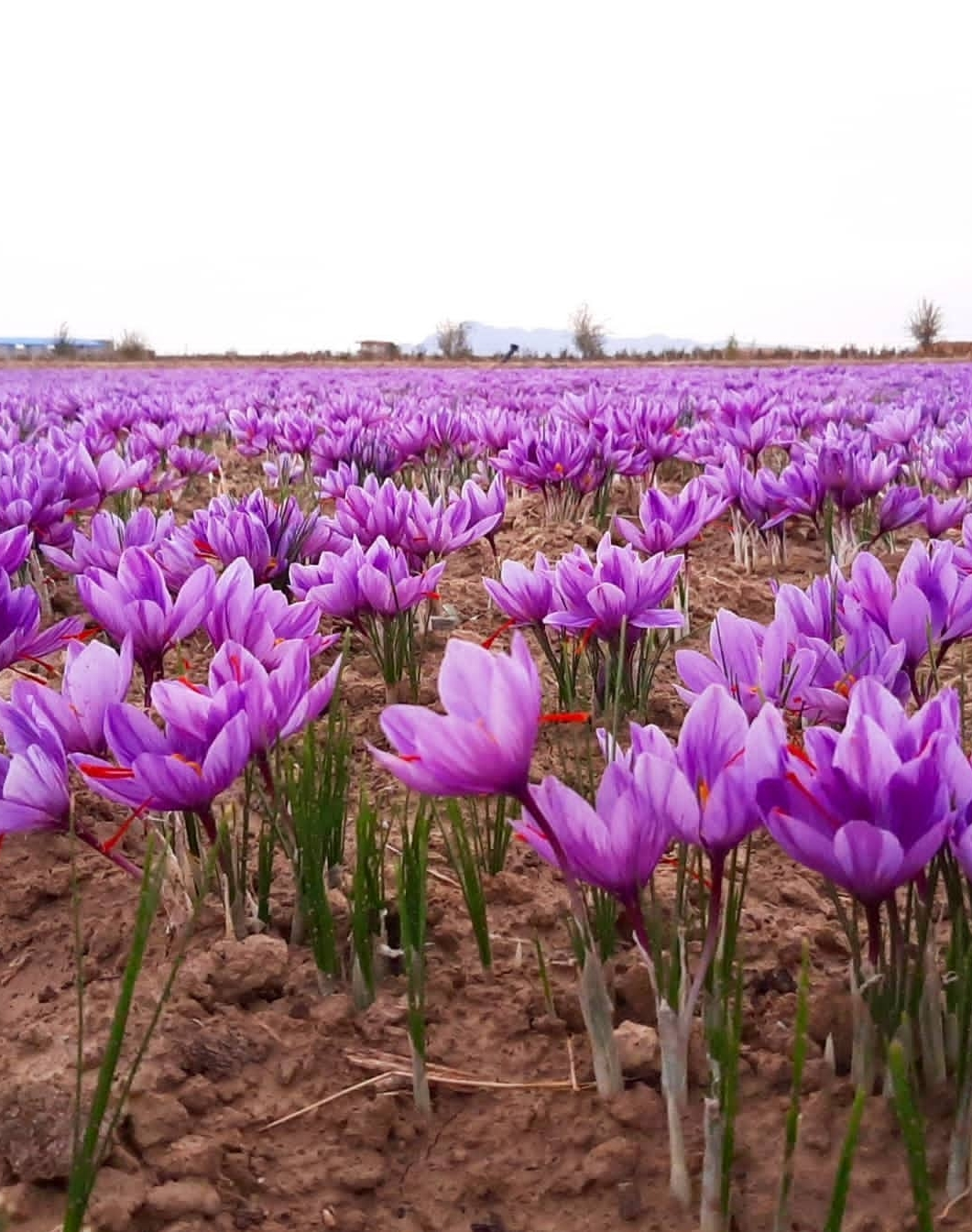Your basket is currently empty!
Harvesting Saffron

Harvesting Saffron
The most enjoyable yet challenging stage in saffron cultivation is harvesting. This process takes about 15 to 20 days to complete.
Timing and Process of Harvesting
Saffron flowers live for only 1 to 3 days, so it’s crucial to have the necessary facilities and sufficient labor to expedite the harvesting process. Delays can lead to a decrease in the quality of the saffron stigma. The optimal time to harvest saffron is when the flowers are buds and half-open, typically early in the morning before sunrise, to prevent damage to the stigma and ensure high-quality saffron.
Separation of Stigmas
After collecting the flowers, the stigma must be separated from the petals and stamens promptly. This step should be performed in a hygienic environment and at a high speed due to its sensitivity, as it determines the type of saffron produced.
Separation methods include:
- Saffron Bunch :
- The three-branched stigma is separated from the flower parts, stacked, and dried in this state.
- Sargol Saffron:
- The stigmas are cut from the junction with the cream, collected, and dried. Sargol saffron branches are shorter than Negin saffron.
- Pushal Saffron:
- The stigma, along with parts of the cream that remain attached, is separated and dried.
- Precious and Super Precious Saffron:
- The saffron branches must be straight without bending, and no cream should be visible in the saffron.
Drying Saffron
The method of drying saffron significantly affects its quality and final value. Drying can be done using traditional or industrial methods.
- Traditional Method:
- Saffron is exposed to high temperatures to reduce humidity and dry it. This method can lead to the growth of microorganisms, increased contamination, and reduced coloring power due to enzyme activity.
- Industrial Method:
- Saffron is dried using a saffron drying machine, with automatic control of factors such as temperature, humidity, and energy source. The best drying method preserves the crocin, picrocrocin, and safranal in the saffron stigmas, maintaining the highest levels of color, taste, and aroma.
Storing Saffron
Once harvested and dried, saffron needs to be properly packed. This step should also adhere to health guidelines. Standard containers should be used to maintain quality. It’s important to keep saffron away from direct sunlight as it can degrade over time.
